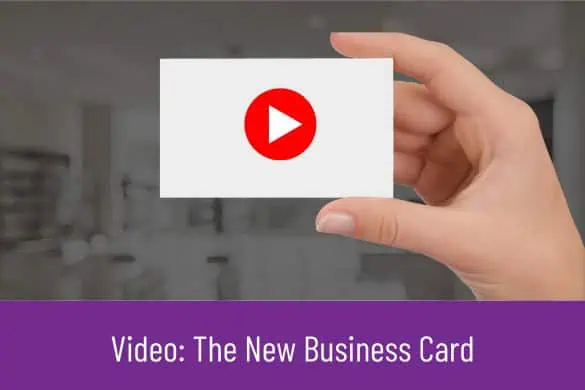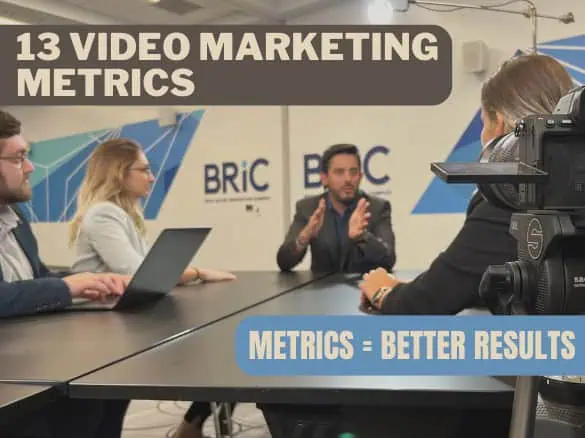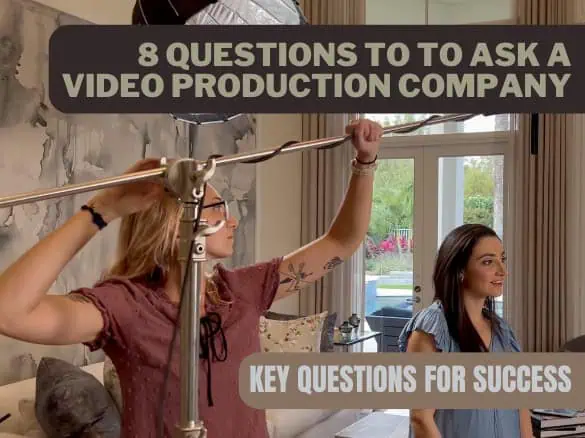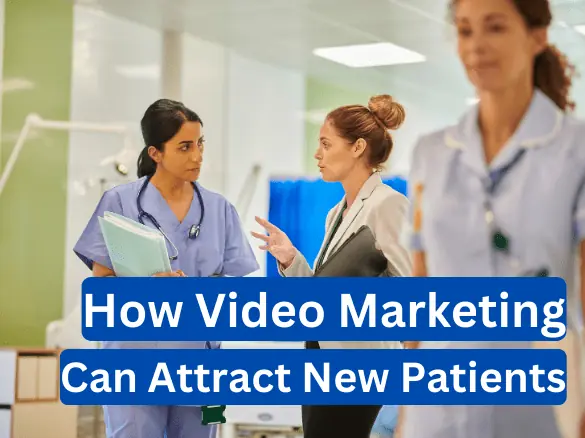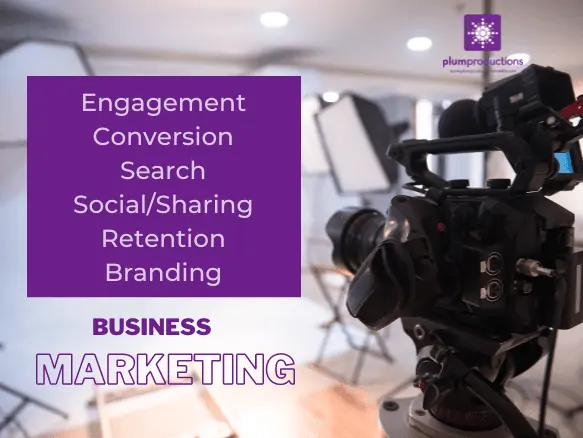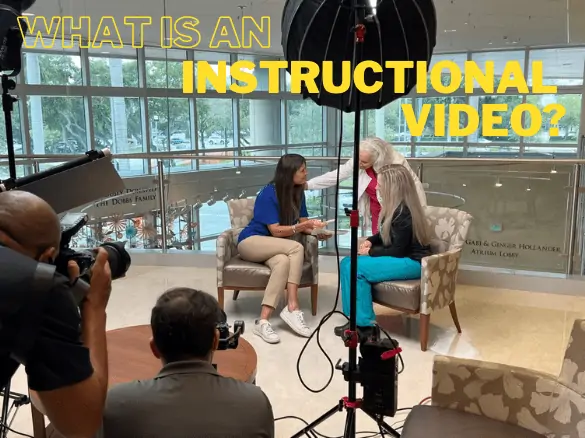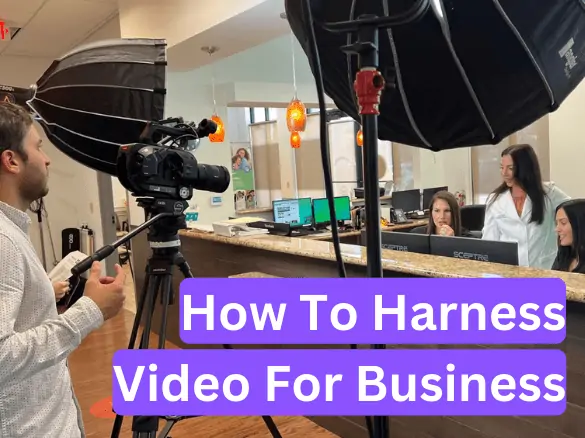The Evolution of Business Networking: Is Video the New Business Card?
We remember the day when business cards were once the cornerstone of professional networking. They conveyed identity, trust, and professionalism in a concise, tangible way. Then, we think about 20 years ago, websites revolutionized how businesses introduced themselves. Their websites were digital extensions that strengthened the credibility of the traditional business cards they passed out. In fact, if your business card didn’t have a website URL on it, some thought you weren’t legitimate. Today, we believe another transformation is taking place. Video is rapidly becoming the most effective way for businesses to showcase their expertise, engage with potential clients, and build trust.
This shift isn’t surprising. Data reveals that 91% of businesses now use video as a marketing tool (Wyzowl), and 84% of viewers visit a company’s website after watching a video (Sprout Social). At Plum Productions, we’ve observed how businesses leverage video to establish credibility and close deals. Here’s why video is now the new business card—and how it’s transforming business communication.
Why Video Is the New Business Card
The way we introduce our businesses has evolved. Websites added credibility and accessibility to business cards and it seems that video goes further by creating an immediate, engaging connection that resonates with today’s audience. How else can you connect so quickly with your potential clients? You immediately give them a peek into your business and they’ll feel more connected.
Video Makes a Strong First Impression
Think of video as your digital handshake. A well-crafted introduction video allows your audience to get a sense of your company’s values, culture, and expertise within seconds. Unlike static websites or printed materials, video conveys personality and emotion, which builds trust. Plus they get a sense of who you are and what your style is.
Credibility Through Visual Storytelling
Businesses that use video to explain their services, showcase success stories, or share client testimonials build instant credibility. A customer who watches a real client explain the value they received from your company is more likely to trust your brand than someone who reads a case study or list of accolades. Plus, they can say what you can’t say without sounding like you’re bragging.
- Example: A software company that shares a client testimonial video showing how their platform solved their problem will leave a much stronger impression than a paragraph of text explaining the same thing.
Unmatched Engagement
Video captures our attention. Let’s face it, we are all mesmerized by moving pictures. Research shows that viewers retain 95% of a video’s message, compared to just 10% when reading text (Forbes). It’s not just about making a great first impression; video helps businesses stay top-of-mind long after the initial interaction.
How Businesses Are Using Video to Connect and Convert
At Plum Productions, we’ve seen companies integrate video into their marketing strategies in more ways that one. Here are some of the more practical ways businesses are using video to strengthen their brand and attract clients:
- Introduction Videos
A short, engaging video on your homepage or LinkedIn profile can introduce your company, share your mission, and invite potential clients to learn more. - Testimonial Videos
Clients are far more likely to trust your business when they see real people sharing positive experiences. Testimonial videos provide authenticity that text simply can’t match. - Explainer and Product Demonstration Videos
Complex services or products can be difficult to describe in words. Videos simplify the explanation, offering a clear, engaging way to educate potential customers.
Above a short segment of a product explainer video (part of a longer version). Each of these video formats are basically a modern-day business card, helping businesses leave a lasting impression.
Video’s Competitive Advantage
Video isn’t just about making connections; it’s about staying relevant in a competitive marketplace. Businesses that embrace video position themselves as innovative and customer-focused. What do your customers need to know? That’s what your video should show. (Hey! That rhymes!)
A Modern Standard of Professionalism
Businesses without video content are at risk of appearing outdated. Video isn’t just a trend, it shows you understand how to communicate to your potential and current clients in the ways they want to be spoken to. It prioritizes the connection of the audience and the business beyond what a website can do.
Boosting Online Visibility
Incorporating video into your website doesn’t just engage visitors—it also boosts search engine rankings. Websites with video are 53 times more likely to rank on the first page of Google search results (HubSpot). Video also increases the time visitors spend on your site, which signals search engines that your content is valuable. The longer they stay, the more valuable Google says your website it. Guess who gets top billing between a site with video versus the same site without? You guessed it. The site with the video…because the visitor will usually watch the video versus read the site.
Driving Action
Video naturally guides viewers toward the next step, whether that’s visiting your website, scheduling a consultation, or contacting your sales team. Its effectiveness lies in its ability to pair engaging visuals with clear calls to action.
Ready to Make the Shift?
Just as websites strengthened the role of traditional business cards, video is now redefining how businesses connect, build trust, and attract new clients. It’s not just a trend—it’s a necessary step to stay relevant in today’s competitive landscape.
We specialize in creating high-quality videos that strengthen your brand, engage your audience, and drive results. Need help creating something awesome? Contact us today to learn how we can help your business embrace the power of video and stand out in a crowded marketplace.
Related Articles:
How to Measure Video Marketing Success? 13 Useful Metrics
8 Questions to Ask a Video Production Company


